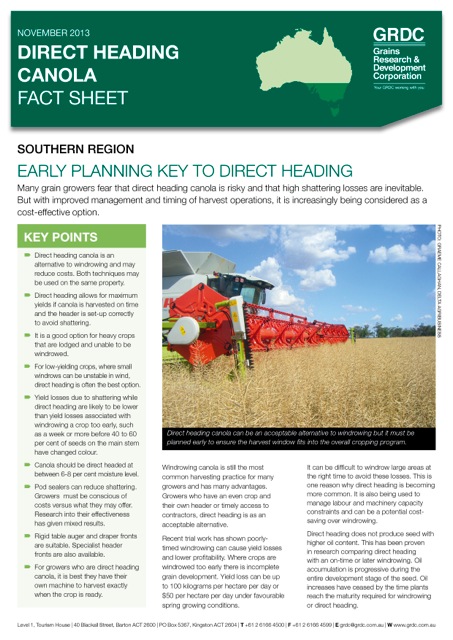Direct heading canola fact sheet
Direct heading canola fact sheet
Published: 4 Nov 2013

Early planning key to direct heading
Many grain growers fear that direct heading canola is risky and that high shattering losses are inevitable. But with improved management and timing of harvest operations, it is increasingly being considered as a cost-effective option.
Key points
- ––Direct heading canola is an alternative to windrowing and may reduce costs. Both techniques may be used on the same property.
- ––Direct heading allows for maximum yields if canola is harvested on time and the header is set-up correctly to avoid shattering.
- It is a good option for heavy crops that are lodged and unable to be windrowed.
- For low-yielding crops, where small windrows can be unstable in wind, direct heading is often the best option.
- ––Yield losses due to shattering while direct heading are likely to be lower than yield losses associated with windrowing a crop too early, such as a week or more before 40 to 60 per cent of seeds on the main stem have changed colour.
- Canola should be direct headed at between 6-8 per cent moisture level.
- ––Pod sealers can reduce shattering. Growers must be conscious of costs versus what they may offer. Research into their effectiveness has given mixed results.
- ––Rigid table auger and draper fronts are suitable. Specialist header fronts are also available.
- For growers who are direct heading canola, it is best they have their own machine to harvest exactly when the crop is ready.
Want to link to this publication?
Use www.grdc.com.au/GRDC-FS-Direct-Heading-Canola to ensure your link remains current and up-to-date!
Region South, North
Region: North; South
